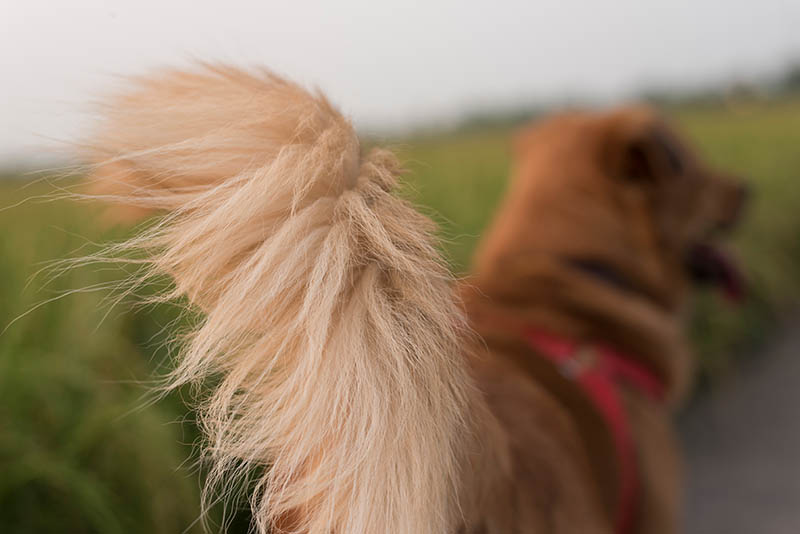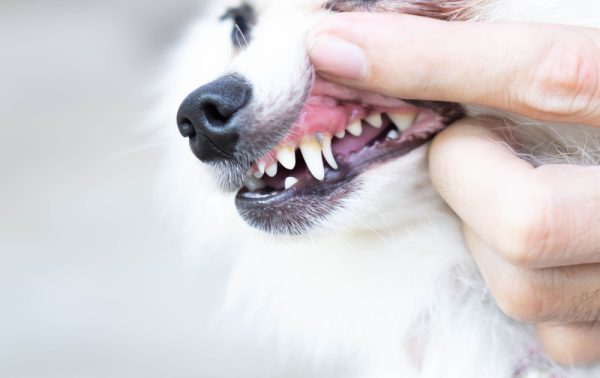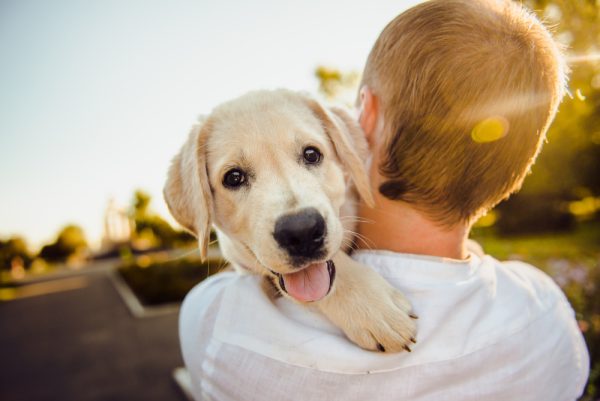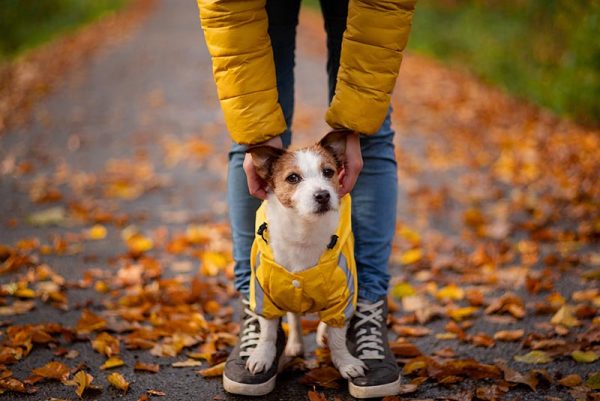One of the main things people look at when engaging with a dog is the tail. It may be wagging vigorously, tucked between its legs, or resting still in the air. The position and motion of the tail send us a message of encouragement or caution. These fluffy, bobbed, and short appendages are not just greeting signs, however.
To learn about the functions of your dog’s tail, here are 10 fascinating facts that may interest you.

Top 10 Dog Tail Facts
1. Dogs Communicate with Their Tails
One of the first things we see when coming home after a long day is our dogs waiting at the door, wagging their tails. Tail wagging is our dog’s way of communicating with us. Although they use the tail to let us know they are happy to see us, they also use it to communicate other things like fear, agitation, and curiosity.
A dog may show signs of aggression or confidence by sticking its tail up straight in the air. When a dog is submissive or unsure, it may tuck its tail between its legs.
Dogs also communicate with the speed at which they wag their tails. For instance, a dog may wag its tail so fast it vibrates, which is an indication of excitement. The speed of the wag can also indicate aggression, insecurity, or friendliness.
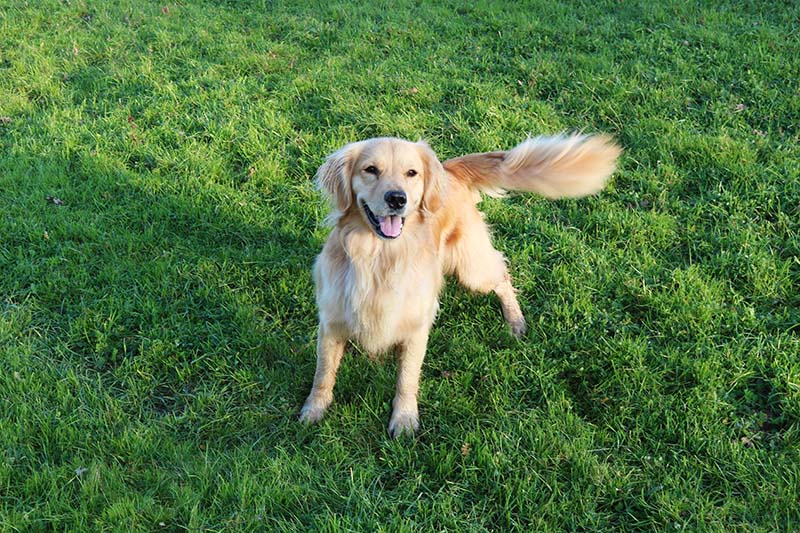
2. Tail Wagging is a Learned Behavior
Just like humans need to learn to walk and talk, puppies learn to communicate with their tails. At about three weeks old, puppies will slowly begin to communicate with any siblings, their mom, and other dogs using “tail talk.” They should master tail wagging by about 6 weeks old.
Since puppies spend most of their time sleeping and nursing, the tail wagging is delayed until they become aware of their environment and begin socializing.
3. Tail to the Right, Tail to the Left—What Does it Mean?
A dog’s tail will pull to the left or right, depending on the dog’s emotions.
When a dog is experiencing negative or positive feelings, its tails will pull to the right or left side of its body. If a dog feels approachable and happy, it will wag its tail to the right. Feelings of insecurity or fear will cause them to wag to the left. Keep this in mind if you are approaching a strange dog, and always use caution.
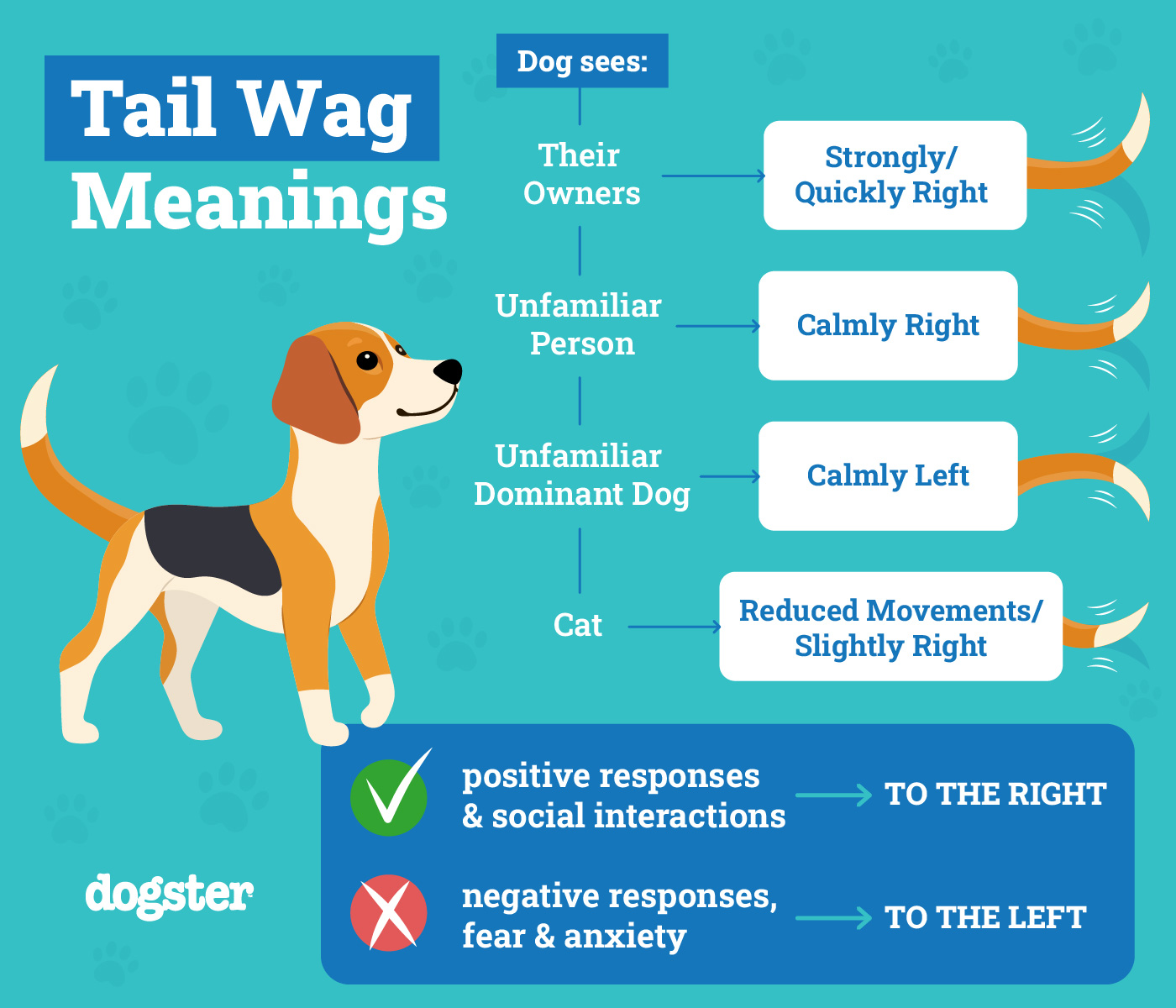
4. Tails Help a Dog’s Balance
Like cats and monkeys, a dog’s tail helps them with balance. These appendages assist athletic dogs with counterbalance when they are turning, leaping, and running. An injury or loss of the tail can affect the dog’s athletic performance, however. They may become off balance temporarily, but they can relearn and adjust those skills.
Dogs that are born with short tails or have had their tails docked can still have balance.
5. Dogs do Not Wag Their Tails When They Are Alone
Since dogs use their tails to communicate, they do not wag them when they are alone. Like humans, there is no sense in talking if no one is listening, according to Dr. Stanley Coren1, author of How to Speak Dog: Mastering the Art of Dog-Human Communication Dr. Coren wrote in Psychology Today2. Dr. Coren states, “When a dog is alone, it will not give its typical tail wags in the same way people do not talk to walls.”
If you have a doggie camera, take notice of your dog’s tail when it is alone. Does your little buddy wag its tail when it hears noises outside, or does it let the tail rest all day? It may be interesting to see if the dog wags at a stuffed animal on the bed!

5. Tail Wagging Releases Pheromones
Dogs that are social use tail wagging to release pheromones and send information about themselves to others.
While humans provide information about themselves in many ways, dogs share information about their age, reproductive status, and sex by wagging their tails. The swaying back and forth of the tail causes the muscles surrounding the dog’s rectum to contract and lean against the anal glands, which triggers a release of pheromones.
7. Dogs Use Their Tails to Swim
If you have a canine that loves the water, its tail might help it swim. Depending on the breed, dog tails come in all shapes and sizes. They are also described by their shape. For instance, short nubs are called bobbed tails.
Some dogs, like Retrievers, have “otter” tails and will use them in the water like a rudder. The Retriever’s tail has thick, short fur with a large base that tapers to the tip.
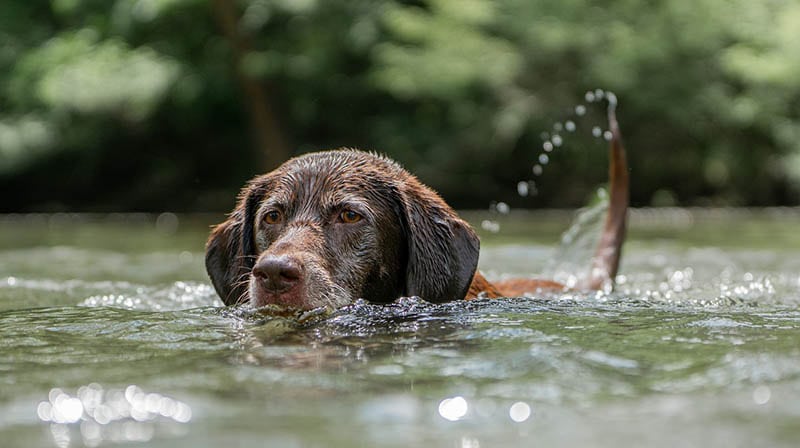
8. A Not-so-happy “Happy Tail”
An injury called “Happy Tail” occurs when a dog wags its tail in excess. The condition is common in dogs like Pit Bulls and Greyhounds because they have smooth, thin tails. The injury can occur when a dog continuously and vigorously wags its tail against objects like walls, furniture, a crate, or carpet until the skin wears away and the tail bleeds. It is also referred to as bleeding tail or kennel tail.
Dogs that are placed in small spaces or kennels for a long time are prone to “Happy Tail.” In these circumstances, the use of a “tail guard” may be helpful in protecting the fragile body part. Many times, “Happy Tail” is a minor injury that is cleared up easily. In some instances, it is chronic and severe and should be discussed with your veterinarian.
9. Tails Do Not Like Cold weather
A condition called limber tail syndrome, also known as acute caudal myopathy, is found primarily in dogs that are exposed to water and cold temperatures. The dogs that are affected by the condition will keep their tail down and tucked between their legs.
The condition is common but not exclusive to active hunting dogs and working dogs, however. It can happen to dogs of all breeds. Some other terms for the condition include swimmers’ tail, broken tail, limp tail, cold water tail, dead tail, and broken wag.
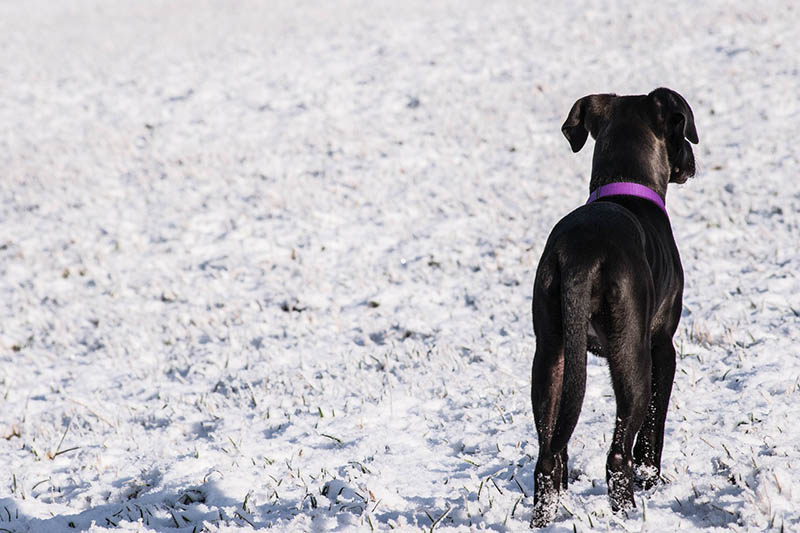
10. Some Dogs Don’t Have Tails
Not all dogs have long, beautiful tails. Some dogs don’t have any tails at all. Whether the tail was injured or amputated, or the dog was born without one, they are mobile and get around like their long-tailed counterparts.
When it comes to communication, however, these tailless fur balls communicate in other ways. Corgis, for example, can communicate by wiggling that famous Corgi butt.
There are also dogs with nubs or bobbed tails that will wiggle adorably back and forth when they are excited and happy.

Conclusion
Surely, there are dog owners out there who are not aware of the functions and purpose of a dog’s tail. You are no longer one of those individuals. Now, you know how it is used to communicate, send information to others, and help your dog with balance and swimming.
There is so much importance in one little body part! We hope you enjoyed this list of fascinating dog tail facts.
See also:
- Do Dogs Like Cold Water? Facts & Care Tips
- Sheepadoodle vs Labradoodle: The Key Differences (With Pictures)
Featured Image Credit: PisutKP, Shutterstock
